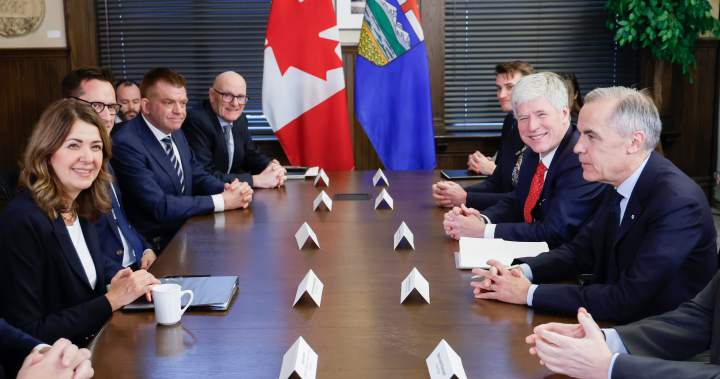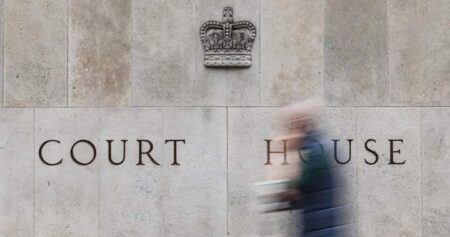A new agreement between the federal government and Alberta aims to lay the groundwork for a new pipeline to the B.C. coast.
Prime Minister Mark Carney and Alberta Premier Danielle Smith signed the Memorandum of Understanding (MOU) Thursday, which aims to “diversify our export markets, make Canada an energy superpower, and build a stronger, more sustainable, more competitive economy.”
But what does the Memorandum of Understanding say? And what does it actually get done? Here’s what you need to know.
The flagship proposal in the MOU is a bitumen pipeline from Alberta to Canada’s West Coast that would carry an additional 300,000 to 400,000 barrels per day destined for Asian markets.
The agreement doesn’t say what route the pipeline will take but says Alberta is expected to submit a proposal for the pipeline to the federal government on or before July 1, 2026.
The MoU says Ottawa’s approval of the pipeline would be based on whether the project is seen as being in the national interest and “provides opportunities for Indigenous co-ownership and shared economic benefits.”
The memorandum lays out that if Alberta proposes a plan by Canada Day 2026, the federal government will clear the path for construction by cutting red tape for the approval process.
The federal government “will provide a clear and efficient approval process under the Building Canada Act for the construction of a new pipeline,” the memorandum says.

Get daily National news
Get the day’s top news, political, economic, and current affairs headlines, delivered to your inbox once a day.
As of now, no company has stepped up to build a new oil pipeline from Alberta to B.C., but Smith has said in the past that her government nevertheless intends to submit a proposal to the Major Projects Office next spring.
Even after the Major Projects Office has approved the project, B.C.’s oil tanker ban will stand in the way. The law, which went into effect in 2019, prohibits tankers from carrying more than 12,500 metric tonnes of crude oil in areas along the northern coast of British Columbia.
The memorandum allows for “needed adjustments to the tanker ban when the new pipeline to Asia is approved by the major projects office.”
In addition to the pipeline, Alberta will also be exempt from Canada’s Clean Electricity Regulations.
The suspension of the regulations in the province is not contingent on the pipeline being approved.
The regulations, which are to come into effect in 2035, would set limits on emissions from power generation using fossil fuels. Alberta has long criticized the regulations, as its grid is predominantly powered by natural gas.
The MOU says Alberta will aim to “achieve net-zero emissions by 2050,” which the province said it will do by working on a new industrial carbon pricing agreement with the federal government.
The suspension of the regulations in Alberta will “will stabilize Alberta’s power grid,” the MOU said. It added that this will enable “massive investments” in artificial intelligence data centres in the province.
Also in the MOU are “multiple ambitious clean energy projects,” Carney’s office said, adding that Alberta’s industrial carbon pricing strategy will be aimed at reducing methane emissions by 75 per cent over the next decade.
The regulations will remain suspended while the province and the federal government negotiate a new carbon pricing agreement by April 1, 2026.
It is unclear if the regulations will be back in effect in Alberta if the two sides fail to reach an agreement on industrial pricing by the April deadline.
The agreement also states that Alberta and the federal government will work with the Pathways Alliance — a collection of six of Canada’s largest oil sands companies — “to develop the world’s largest carbon capture, utilisation, and storage project.”
The pipeline project is not contingent on the CCUS project.
Alberta said the project, known as Pathways Plus, will make its oil the “cleanest heavy oil on the planet,” and displace “heavier emitting oil from Russia, Venezuela and Iran.”
Research has shown that most carbon capture projects fail to get off the ground because of high costs. In the 50 years since the first ever carbon project, the technology has captured just 0.001 per cent of global emissions, according to the David Suzuki Foundation.
“Seventy per cent of carbon captured through CCS in Canada is used to help extract more oil,” the David Suzuki Foundation says on its website.
© 2025 Global News, a division of Corus Entertainment Inc.
Read the full article here














